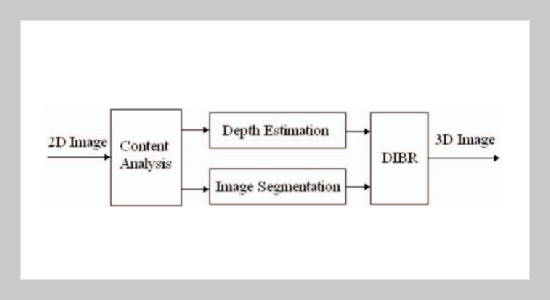REFERENCES
- [1] Saxena, A., Chung, S. H. and Ng, A. Y., “3-D Depth Reconstruction from a Single Still Image,” International Journal of Computer Vision, Vol. 76, No. 1, pp. 5369 (2008). doi: 10.1007/s11263-007-0071-y
- [2] Saxena, A., Chung, S. H. and Ng, A. Y., “Make3D: Learning 3D Scene Structure from a Single Still Image, “ IEEE Trans. on Pattern Analysis and Machine Intelligence, Vol. 31, No. 5, pp. 824840 (2009). doi: 10.1109/TPAMI.2008.132
- [3] Saxena, A., Chung, S. H. and Ng, A. Y., “Learning Depth from Single Monocular Images,” Neural Information Processing System, Vol. 18 (2005).
- [4] Michels, J., Saxena, A. and Ng, A. Y., “High Speed Obstacle Avoidance using Monocular Vision and Reinforcement Learning,” Proceeding of 22nd Internal conference of Machine Learning (2005). doi: 10.1145/ 1102351.1102426
- [5] Fehn, C., “Depth-Image-Based Rendering (DIBR), Compression and Transmission for a New Approach on 3D-TV,” Proceedings of SPIE Stereoscopic Displays and Virtual Reality Systems XI, Vol. 5291, pp. 93104 (2004). doi: 10.1117/12.524762
- [6] Battiato, S., Capra, A., Curti, S. and Cascia, M. L., “3D Stereoscopic Image Pairs by Depth-Map Generation,” Proceedings of the 3D Data Processing, Visualization, and Transmission, pp. 124131 (2004). doi: 10.1109/ TDPVT.2004.1335185
- [7] Cantoni, V., Lombardi, L., Porta, M. and Sicari, N., “Vanishing Point Detection: Representation Analysis and New Approaches,” Proceeding of the 11th International Conference on Image Analysis and Processing, pp. 9094 (2001). doi: 10.1109/ICIAP.2001. 956990
- [8] Bajcsy, R. and Lieberman, L., “Texture Gradient as a Depth Cue,” Computer Graphics and Image Processing, Vol. 5, No. 1, pp. 5267 (1976). doi: 10.1016/ S0146-664X(76)80005-6
- [9] Gini, G. and Marchi, A., “Indoor Robot Navigation with Single Camera Vision,” Second International Workshop on Pattern Recognition in Information Systems, pp. 6776 (2002).
- [10] Shao, M., Simchony, T. and Chellappa, R., “New Algorithms from Reconstruction of a 3-d Depth Map from One or More Images,” IEEE Conference on CVPR, pp. 530535 (1988). doi: 10.1109/CVPR.1988. 196286
- [11] Loomis, J. M., “Looking Down is Looking Up,” Nature News and Views, Vol. 414, pp. 155156 (2001). doi: 10.1038/35102648
- [12] Wu, B., Ooi, T. L. and He, Z. J., “Perceiving Distance Accurately by a Directional Process of Integrating Ground Information,” Letters to Nature, Vol. 428, pp. 7377 (2004). doi: 10.1038/nature02350
- [13] Bülthoff, I., Bülthoff, H. and Sinha, P., “Top-down Influences on Stereoscopic Depth-Perception,” Nature Neuroscience, Vol. 1, pp. 254257 (1998). doi: 10.1038/ 699
- [14] Shi, J. and Malik, J., “Normalized Cuts and Image Segmentation,” IEEE Trans. on Pattern Analysis and Machine Intelligence, Vol. 22, No. 8, pp. 888905 (2000). doi: 10.1109/34.868688
- [15] Chen, Q. and He, C., “Integrating Clustering with Level Set Method for Piecewise Constant Mumford-Shah Model,” EURASIP Journal on Image and Video Processing, p. 1 (2014). doi: 10.1186/1687-5281- 2014-1
- [16] Harrabi, R. and Braiek, E. B.,” Color Image Segmentation using Multi-level Thresholding Approach and Data Fusion Techniques: Application in the Breast Cancer Cells Images,” EURASIP Journal on Image and Video Processing 2012, p. 11 (2012). doi: 10.1186/ 1687-5281-2012-11
- [17] Masoud, H., Jalili, S. and Hasheminejad, S. M. H., “Dynamic Clustering using Combinatorial Particle Swarm Optimization,” Applied Intelligence, pp. 126 (2012). doi: 10.1007/s10489-012-0373-9
- [18] Pappas, T. N., “An Adaptive Clustering Algorithm for Image Segmentation,” IEEE Trans. on Signal Processing, Vol. 40, No. 4, pp. 901914 (1992). doi: 10. 1109/78.127962
- [19] Mújica-Vargas, D., Gallegos-Funes, F. J., Rosales-Silva, A. J. and de Jesús Rubio, J., “Robust C-prototypes Algorithms for Color Image Segmentation,” EURASIP Journal on Image and Video Processing, p. 63 (2013). doi: 10.1186/1687-5281-2013-63
- [20] Ray, S. and Turi, R. H., “Determination of Number of Clusters in K-means Clustering and Application in Colour Image Segmentation,” International Conference on Advances in Pattern Recognition and Digital Techniques, pp. 2729 (1999).
- [21] Bezdek, J. C., Pattern Recognition with Fuzzy Objective Function Algorithms, Plenum, New York (1981).
- [22] Dunn, J. C., “Well Separated Clusters and Optimal Fuzzy Partitions,” Journal Cybern., Vol. 4, pp. 95104 (1974). doi: 10.1080/01969727408546059
- [23] Bezdek, J. C., “Numerical Taxonomy with Fuzzy Sets,” J. Math. Biol., Vol. 1, pp. 5771 (1974). doi: 10. 1007/BF02339490
- [24] Xie, X. L. and Beni, G., “A Validity Measure for fuzzy Clustering,” IEEE Trans. on Pattern Analysis and Machine Intelligence, Vol. 13, No. 8, pp. 841847 (1991). doi: 10.1109/34.85677
- [25] Davies, D. L. and Bouldin, D. W., “A Cluster Separation Measure,” IEEE Trans. on Pattern Analysis and Machine Intelligence, Vol. 1, No. 4, pp. 224227 (1979). doi: 10.1109/TPAMI.1979.4766909
- [26] Gath, I. and Geva, A. B., “Unsupervised Optimal Fuzzy Clustering,” IEEE Trans. on Pattern Analysis and Machine Intelligence, Vol. 11, pp. 773781 (1989). doi: 10.1109/34.192473
- [27] Chou, C. H., Su, M. C. and Lai, E., “A New Cluster Validity Measure and its Application to Image Compression,” Pattern Analysis and Applications, Vol. 7, No. 2, pp. 205220 (2004). doi: 10.1007/s10044-004-02 18-1
- [28] Wu, H.-M., “On Biological Validity Indices for Soft Clustering Algorithms for Gene Expression Data,” Computational Statistics & Data Analysis, Vol. 55, No. 5, pp. 19691979 (2011). doi: 10.1016/j.csda.2010. 12.003
- [29] Saha, S. and Bandyopadhyay, S., “Automatic MR Brain Image Segmentation using a Multiseed Based Multiobjective Clustering Approach,” Vol. 35, No. 3, pp. 411427 (2011). doi: 10.1007/s10489-010-0231-6
- [30] Some Images are Available on the Following Web site, http://travel.network.com.tw/scenery/
- [31] Cheng, F.-H. and Yang, J.-C., “Depth Estimation from Single Image Based on Vanishing Point,” Journal of Information Technology and Applications, Vol. 1, No. 3, pp. 229235 (2006).
















